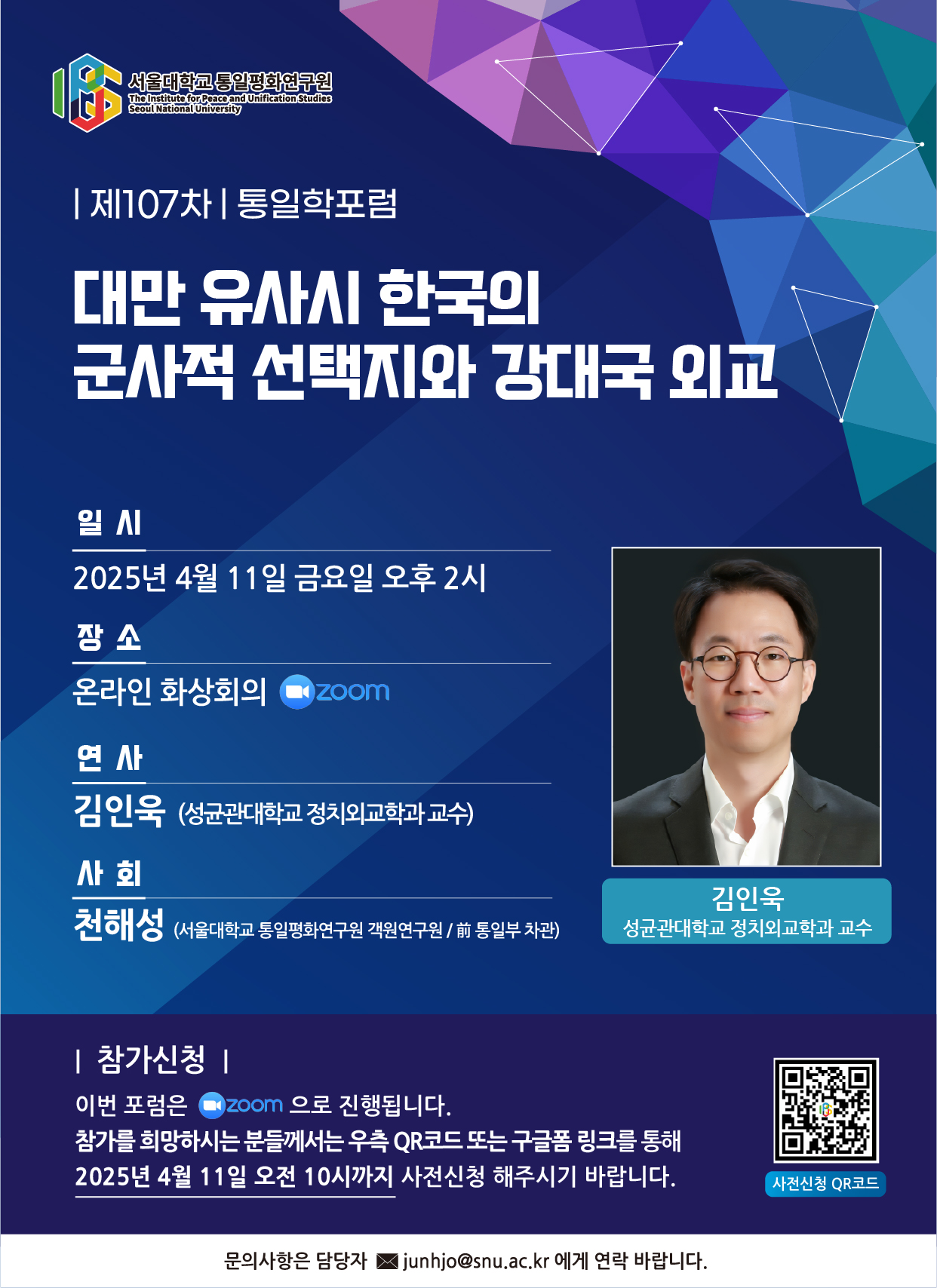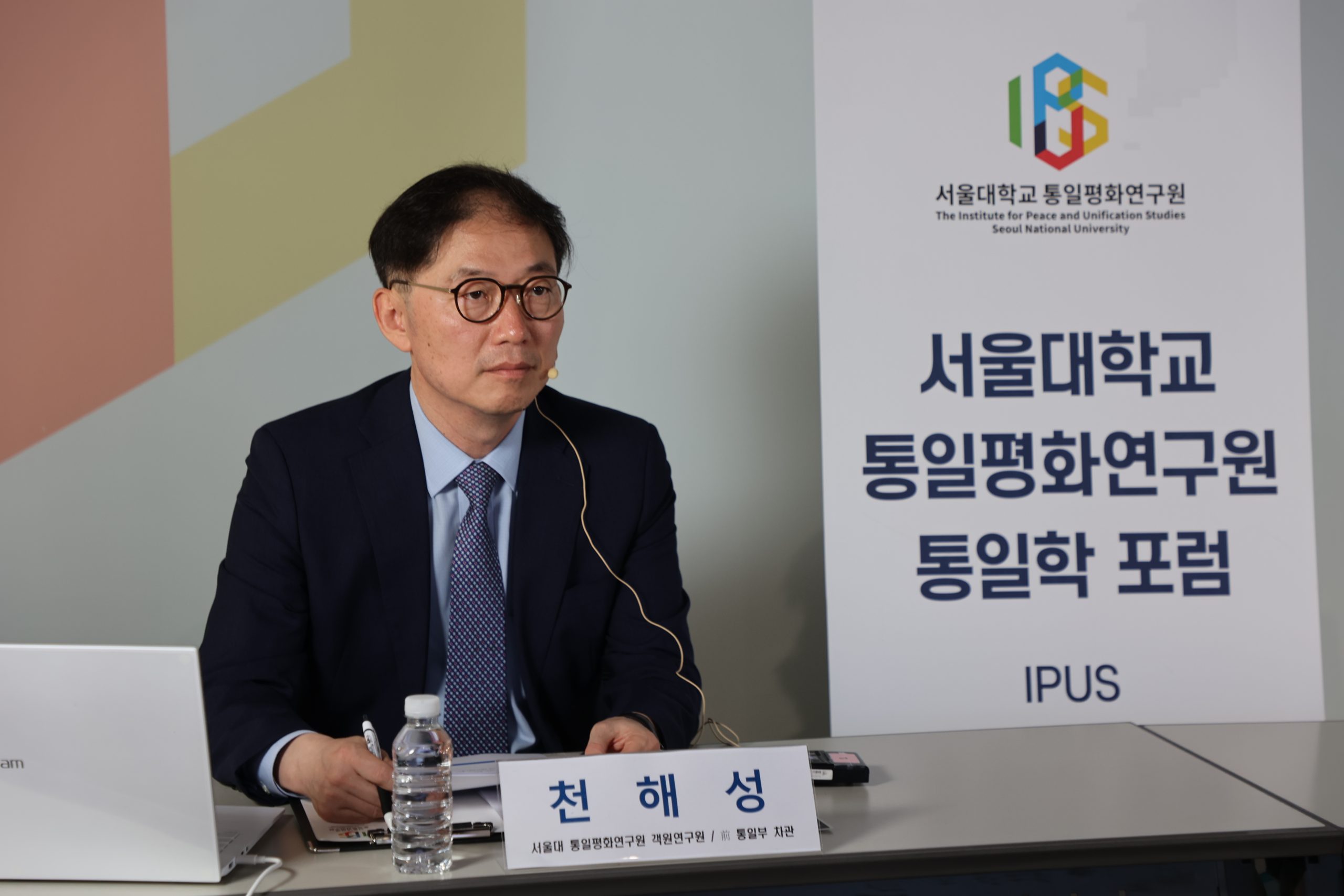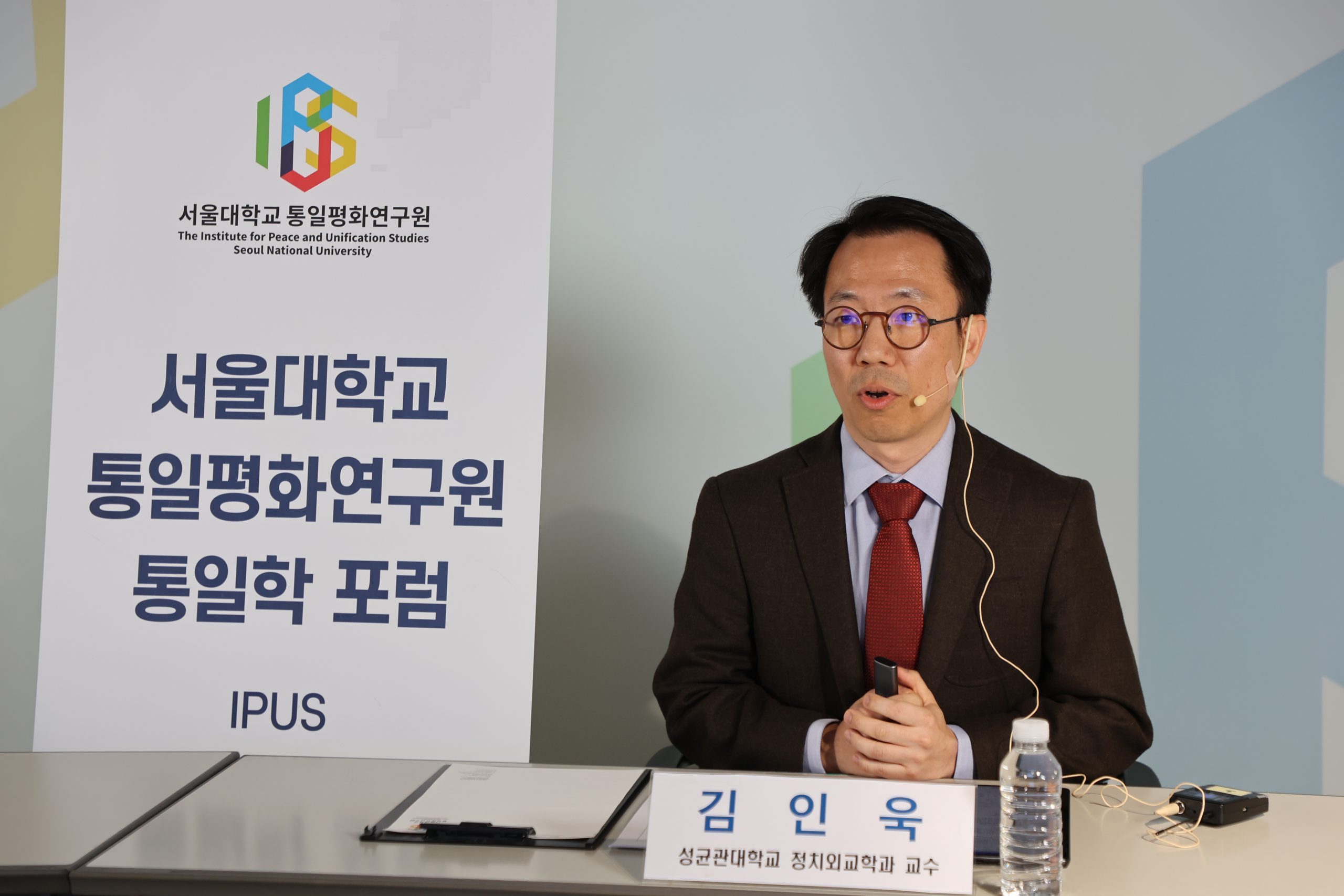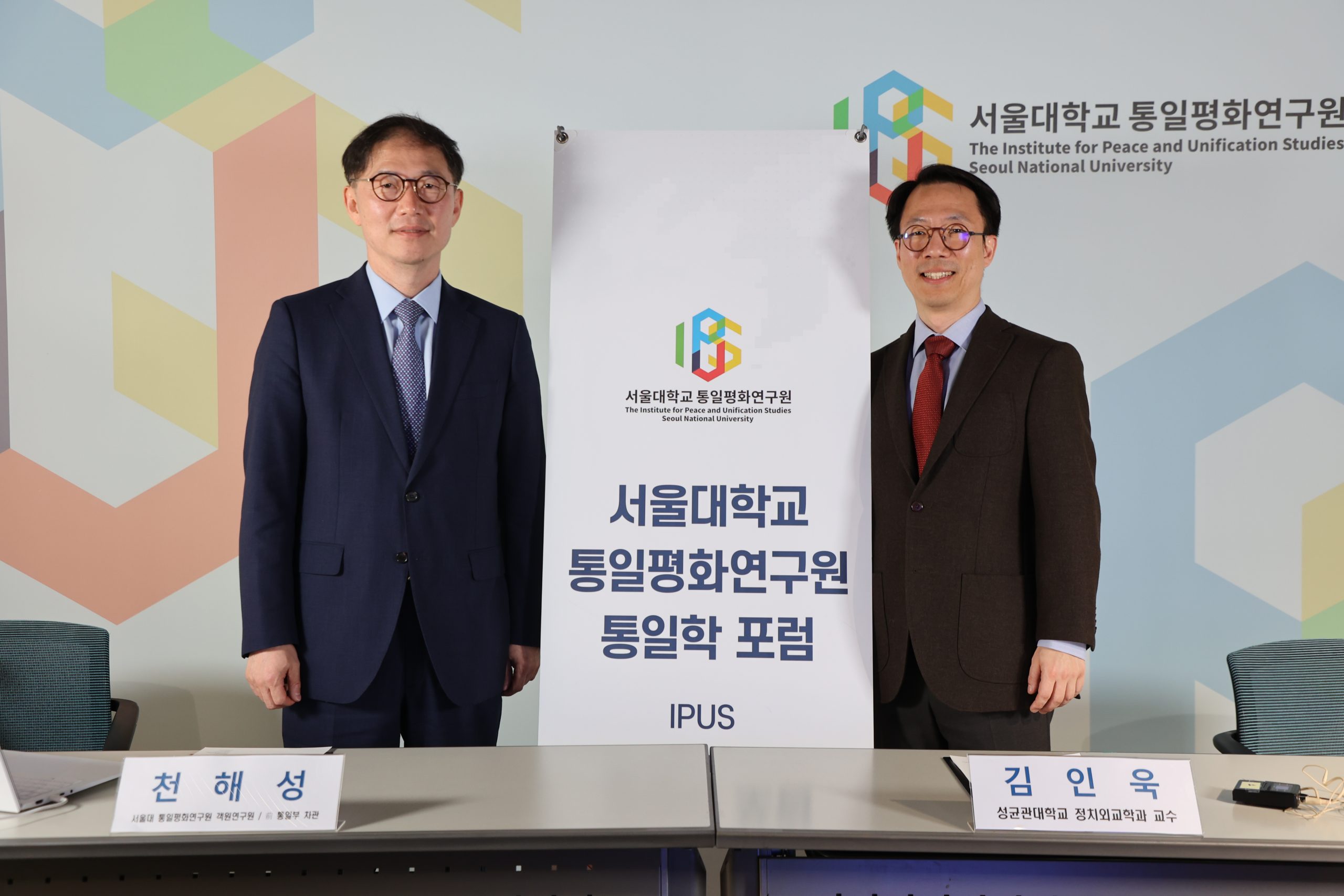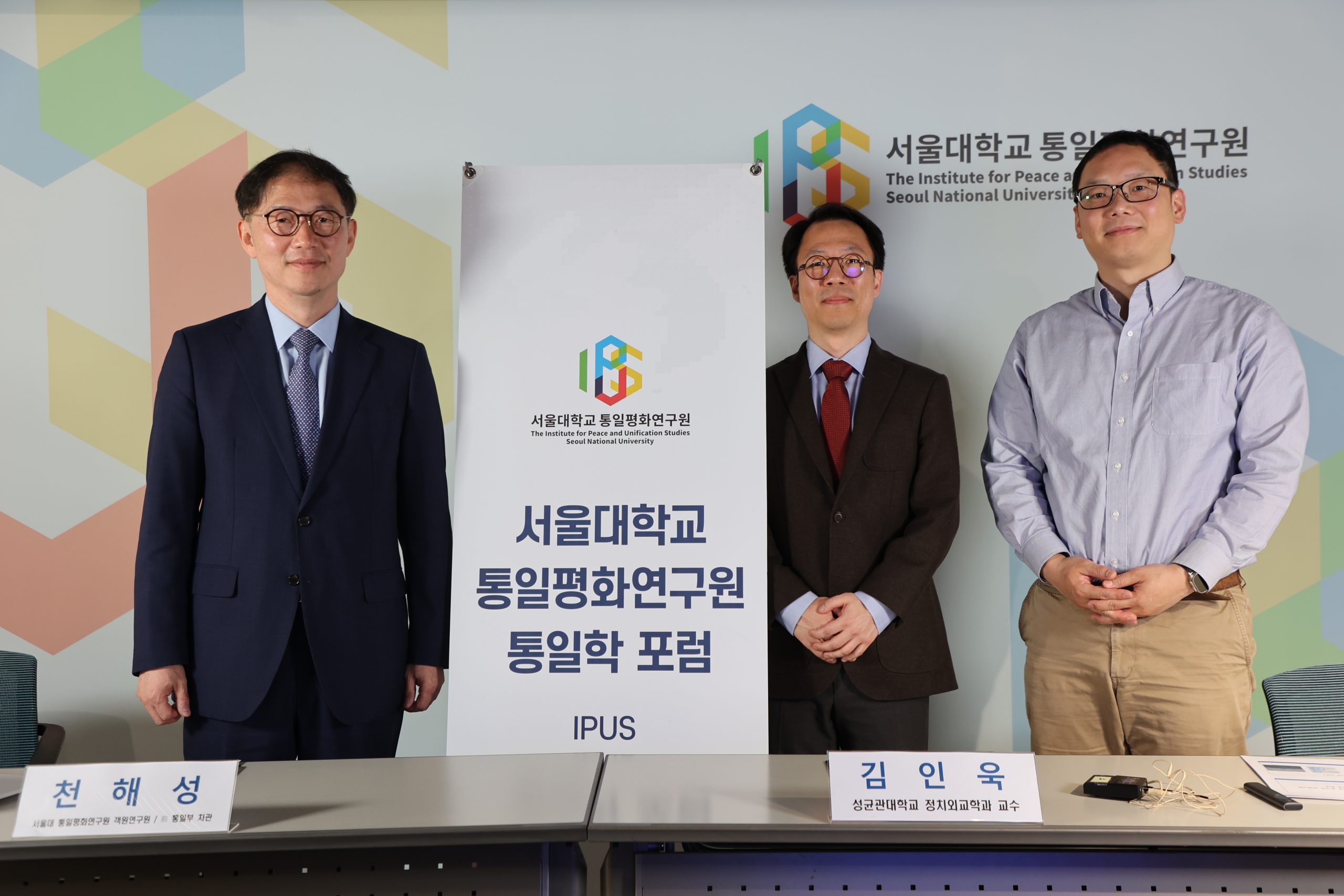[107th Unification Studies Forum] South Korea’s Military Options and Great Power Diplomacy in the Event of a Taiwan Contingency
- Date: Friday, April 11, 2025, 14:00 – 15:30 (KST)
- Venue: Online Video Conference(ZOOM)
- Presenter: Inwook Kim (Department of Political Science and International Relations, Sungkyunkwan University)
- Moderator: Haesung Chun (Visiting Research Fellow, Institute for Peace and Unification Studies, Seoul National University / Former Vice Minister of Unification)
- Topic: South Korea’s Military Options and Great Power Diplomacy in the Event of a Taiwan Contingency
The Institute for Peace and Unification Studies (IPUS) at Seoul National University hosted the 107th Unification Studies Forum on Friday, April 11, 2025, under the theme “South Korea’s Military Options and Great Power Diplomacy in the Event of a Taiwan Contingency” with Professor Kim Inwook of the Department of Political Science and International Relations at Sungkyunkwan University. The Unification Studies Forum is an expanded and reorganized version of the ‘Unification Policy Forum’, which held 75 sessions between 2006 and 2020, and is now in its 107th session. The forum was moderated by Chun Hae-sung, Visiting Research Fellow at IPUS, who opened the event with welcoming remarks.
In this forum, Professor Kim analyzed South Korea’s possible military options and strategic diplomatic posture in the event of a Taiwan contingency. He began by identifying four common limitations in current South Korean discourse on the matter. First, the discussion tends to be reactive, focusing solely on how to respond to U.S. requests. Second, it assumes a static policy position that cannot be revised once chosen. Third, it relies on a partial set of military options. Lastly, it operates within a U.S.-centric framework that largely omits China’s role. Professor Kim proposed a new analytical framework aimed at overcoming these tendencies and enhancing South Korea’s strategic autonomy and diplomatic leverage.
Drawing from this framework, he categorized South Korea’s potential military options into four types—Status Quo, Rear Support, Forward Basing, and Direct Participation—and explained the strategic and diplomatic implications of each. Prior to this, he reviewed the evolution of South Korea’s policy stance on the Taiwan issue. Since establishing diplomatic relations with China in 1992, South Korea has respected the One-China principle. However, he noted a shift beginning with the 2021 ROK-U.S. summit, where the Taiwan Strait was first mentioned in a joint statement, followed by President Yoon Suk-yeol’s 2023 Reuters interview, where Taiwan was described as a matter of “global concern.”
While Professor Kim acknowledged that Taiwan’s fate may not directly constitute a core national interest for South Korea, he emphasized that Seoul would still face significant consequences due to U.S. expectations for military contributions and potential Chinese retaliation. He analyzed this situation through the lens of alliance theory, particularly the dilemma between entrapment and abandonment, and argued that South Korea must strike a balance by utilizing conditional participation and pre-coordination as diplomatic tools.
The first option, Status Quo, involves maintaining the ROK-U.S. alliance strictly for deterrence against North Korea, prohibiting the use of South Korean territory for Taiwan operations, and preserving Korean military assets. Sub-categories include complete non-involvement(bystander), humanitarian aid, and non-lethal support such as materials and participation in sanctions. While this minimizes the risk of direct conflict with China and reduces defense burdens on the Korean Peninsula, it may provoke dissatisfaction from the U.S. and raise operational uncertainty regarding U.S. Forces Korea.
The second option, Rear Support, entails logistical contributions such as providing U.S. bases in Korea for medical and maintenance facilities, pre-positioning of military equipment, and functioning as transit or staging areas. This allows South Korea to meet some expectations from both the U.S. and China while keeping military risks relatively low. Professor Kim noted that any such support should be premised on clear risk management and operational limits.
The third option, Forward Basing, envisions using U.S. bases in Korea (e.g., Osan, Gunsan) as launch points for direct operations against China. He warned that this could expose the Korean Peninsula to Chinese preemptive strikes and trigger coordinated provocations from North Korea, thereby expanding the theater of conflict. In such a case, South Korea would need to demand robust extended deterrence guarantees from the U.S. while also conveying red lines to China.
The fourth and most escalatory option, Direct Participation, includes escort missions for U.S. naval and air assets, operational involvement in the West Sea, or the actual deployment of troops to the Taiwan theater. Although he assessed the likelihood of this option as low, Professor Kim explained that it could yield high diplomatic value in the form of trust and technological benefits from the U.S. Nonetheless, the risks of direct confrontation with China, nuclear escalation, and parallel tensions with North Korea would be considerable.
Concluding the lecture, Professor Kim clarified that his analysis was based on a full-scale war scenario and that “the likelihood of a Taiwan war remains low.” However, he stressed that “even a low-probability event warrants advance preparation due to the magnitude of its impact.” He drew a parallel with nuclear contingency planning, emphasizing that risk magnitude can justify preparedness regardless of probability. He added that the framework discussed could serve as a useful reference not only for South Korea but also for other countries in the Asia-Pacific region facing similar dilemmas. Finally, he noted that the four military roles and corresponding diplomatic strategies outlined were “not a final list but an initial categorization that may be revised depending on actual policy decisions,” and that they should remain subjects of ongoing discussion.

